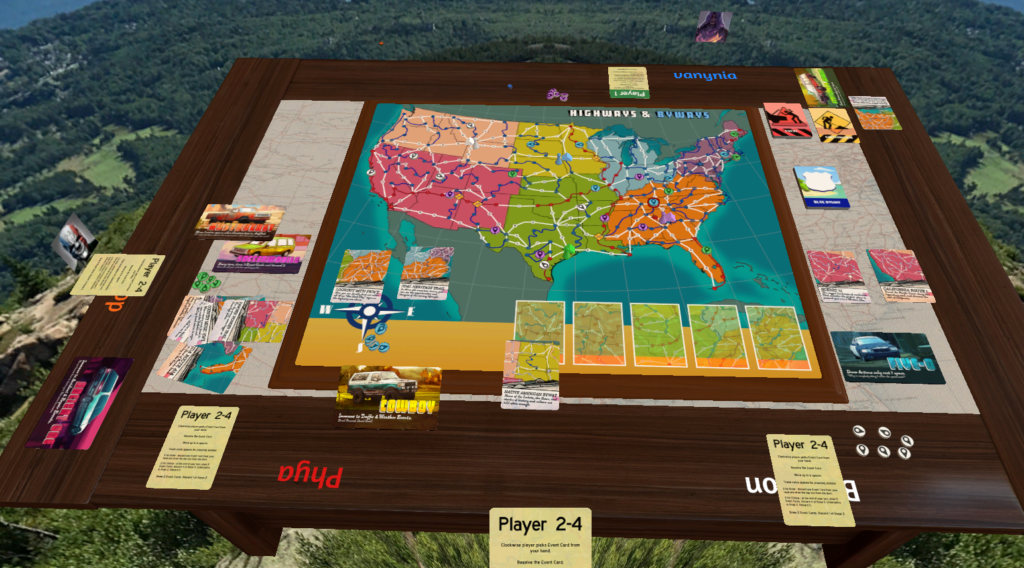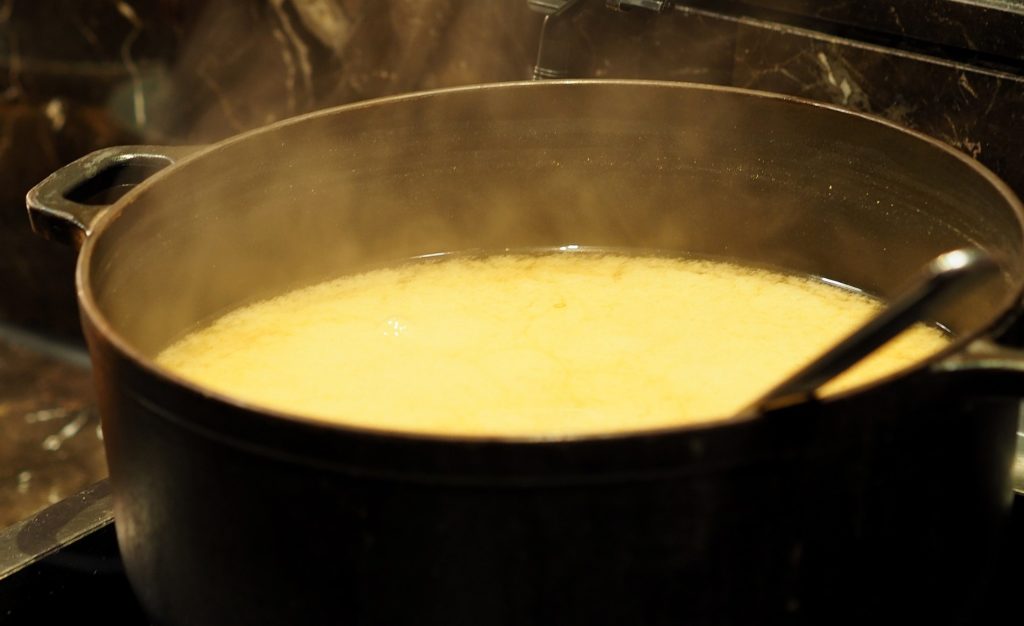Dev Diary posts are made to teach game development through specific examples from my latest project: Highways & Byways. Just here for Highways & Byways updates? Click here.
Last week, I talked about how time-consuming and difficult it can be to get a board game working. It takes a long, long time for a board game to be fun. Fast forward to the future, though, and let’s say your game has been working for a while. People are enjoying it, and some even love it. Yet you still frequently get a lot of suggestions on how to refine the game. Feedback may be hedged with “this is a really polished product, but…”
Looking for more resources to help you on your board game design journey?
Here you go: no email required!
Like this writing style?
Check out my latest blog on marketing here.
Congratulations, you’ve created an Almost Finished Board Game! This is where Highways & Byways is right now. I’d like to talk about this part of game development. I think it could scare a lot of talented people like you off the journey if you don’t know what to expect.
Once the core engine and mechanics are in place, board games can be dragged down by easy-to-fix but hard-to-identify issues. In Highways & Byways, I had a simple rule where you discard every turn under certain conditions. It was a sentence. It was dragging down the game’s flow, adding several minutes to the play time, leaving inactive players isolated, and reducing the physical accessibility of the game. One sentence.
Here’s another simple example. After Protospiel Atlanta, I made some fixes – going from version I-2 (20) to I-3 (21). I reduced the number of spaces on the board. It made the whole map feel less cluttered. The routes stayed in the same place, but the whole game became less of a visual burden. It also cut the play time by about a third, which was a desired effect. One little baby problem, though: suddenly some vehicles became super powerful while others didn’t have enough play time to become relevant.

None of these issues are enough to break the game. They just lessen the experience. Because board games are complicated systems, you will also reach this point one day. You’ll reach a point where there is nothing left to do but tweak the game. Yet there are so many tweaks that will need to be done. That is the Agony of the Almost Finished Game – an endless series of tweaks.
This stage can feel interminable. I’ve been in it for close to two months now. With that in mind, when you find yourself in the midst of the Agony of the Almost Finished Game, here are some pieces of advice I’d like you to remember:
1) Set a hard “win condition” for your project.
Art is never finished, just shipped. You will never be 100% happy with your project. You need to pick a condition under which you’re willing to ship the game and commit to that condition.
For Highways & Byways, my condition is simple: play 100 times without making a major change before sending to reviewers.
There is nothing magical about 100 times. It’s arbitrary – it could be 44 or 516. It’s a handy number that gives me a large enough sample size to use statistics to find broken strategies. It’s enough games for me to be sure it’s working before I spend a few hundred bucks printing sample copies and sending them to board game reviewers.
2) Reset the clock if you have to.
If your win condition involves playing a certain number of games before shipping, you must be mentally ready to reset your play count to zero if you make a major change. I’d racked up a few plays on version I-3 of Highways & Byways, but changing Event Card discard rules is a big mechanic change, so I reset the count to zero.
3) Write down everything your play-testers say even if you disagree.
You should already be doing this, but this is especially important once you hit the Almost Finished state. Because the slightest tweaks can have massive positive impacts at this point, you might find yourself reviewing your notes later. A single piece of advice – even a weird one – could be the fix you need. This is roughly akin to adding salt at the perfect time when you’re cooking – it takes like 15 seconds and can dramatically improve the end product.

4) Almost Finished Games are sell-able, but they won’t build your legacy.
Once you reach this point, your game is sell-able. It can fund on Kickstarter, get enough good reviews for pull quotes, and get a 6.0 – 7.0 on Board Game Geek, but…
Do you want to be the designer of a good game or do you want to be the designer of a great game?
Once you start getting people who love your game and who come back to it, you know it’s sell-able. That doesn’t mean it’s a good game, that it’ll get $100,000, or that you should ship that version. It just means that you can sell it with a strong enough marketing system. I don’t know about you, but understanding this reduces my stress and allows me to work better. With survival stress out of the way, I can focus on creating something people will really enjoy and remember. You might work the same way.
5) You will eventually finish the game.
If you stick to your game, you will eventually be able to finish it and make a great game. You might have to push your timelines back. You might have to do loads and loads of play-testing. Yet you will eventually finish the game if you stick to it. Game development is a marathon, and this is the 20-mile mark where you hit the wall. To extend the analogy, once you hit this point, you’re like 80% of the way to publication, but it’s too soon to see the finish line.
Most Important Highways & Byways Updates
- I’ve incremented Highways & Byways to version I-4. That’s the 22nd total version.
- I-3 is sellable, but I want to make the game excellent. I-4 comes with art applied, slightly simplified rules, and tighter balance.
- If I-4 survives 100 tests, I’m considering this game ready for review.





6 thoughts on “The Agony of the Almost Finished Board Game”
I love point #4. I used to think that for a publisher to buy a game it had to be 100% done mechanically. But now I have been to enough designer events like Unpub to play a prototype that isn’t finished and then be told that it is signed with a publisher. That blew my mind. And most times they are testing significant mechanical changes, not just little balance issues. When I heard this I looked at my own game which I was waiting to pitch after it was Done and thought, this is actually good enough to try and sell; it’s almost done. Because of that mindset I pushed it hard and it’s now in the hands of several publishers waiting approval. I continue to work diligently on it, waiting for the day when I meet my goal with it. I now have two games that are at this wonderful point of almost done and it’s encouraging and motivating to know that, and such a relief to not have to wait for the elusive satisfaction of Done.
Hopefully this helps you reach out to publishers with your other games as well 🙂
I’m kinda stuck in the same boat but I’m standing between two different publishing routes. And I’m starting to think I just need to double down and sell the game. I don’t have more to actually change, the 3 starter decks are done and tweaked and I’ve played 100 if not 1000 of games with them.
Getting the game into players hand can even be more important, and as you say, a product is never finished, just shipped, is something I need to start living more by!
If State of Wonder is consistently getting good quality scores and you haven’t made changes in a while, you’re probably good to go 🙂
A lot of the time, what turns good games into great games happens within communities of players and not the designer’s office.
I have experienced all of these points. I have spent nearly four years on my game now. It was in fact played at least 100 times before I sent to playtesters. The problem now is the playtesters are not giving me the feedback I need in order to continue and prepare my game for Kickstarter.
Even after more play testing I have found a quicker method for the combat mechanic, at the cost of losing some theme to the game.
I am soooo close to finishing this, but because of the social media pressure on Kickstarter, I have to provide a good KS page or it basically will not fund. I cannot afford to buy more prototypes right now to send out to game reviewers in time before my KS. So do I postpone my KS for another 6 months, or push on and see what happens without professional game reviews? That is my wall right now.
That’s tricky. Reviews are definitely important to having a good Kickstarter page, but I don’t personally think you need 10 or 12 or 15 like a lot of people think. Even 3-4 good reviews on your page would probably do the trick. If you can’t pay for prototypes right now to get those good reviews, I’d personally hold off for a few months and build your audience instead.